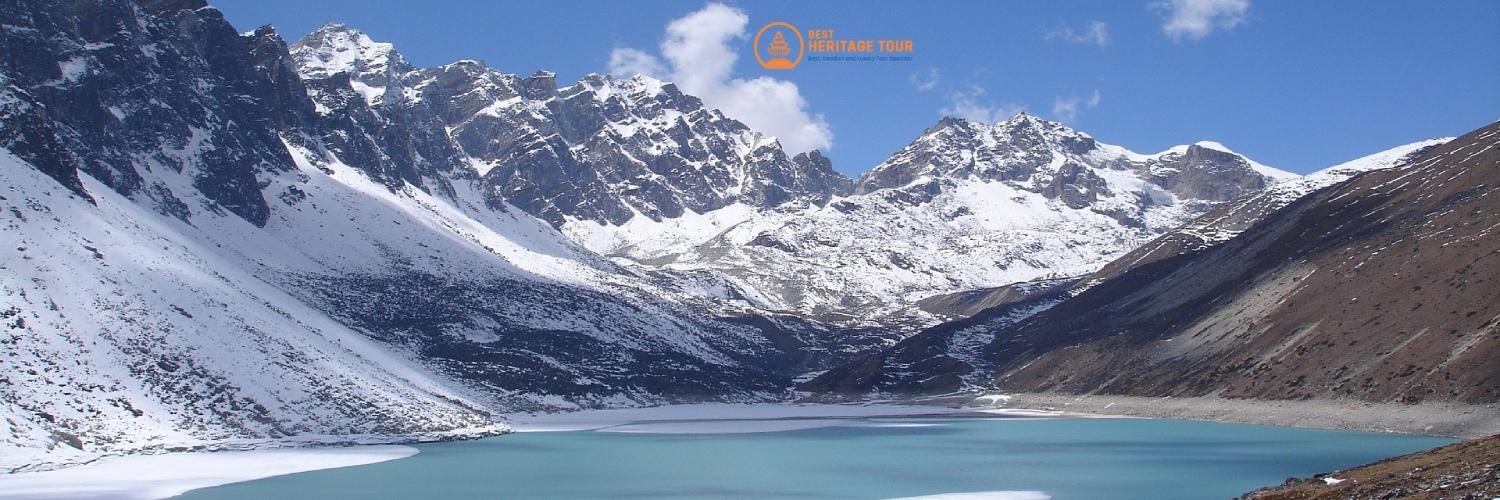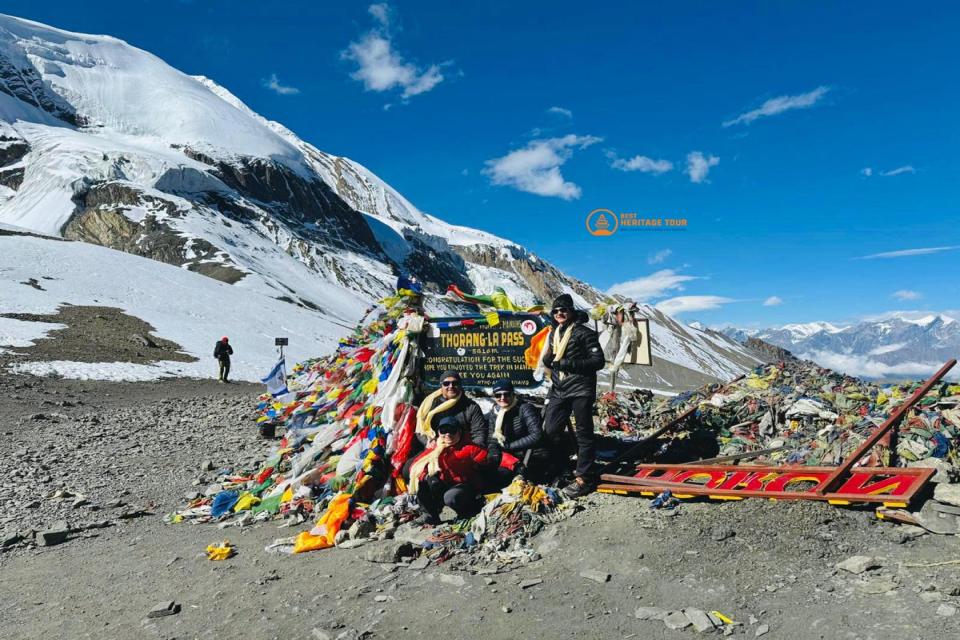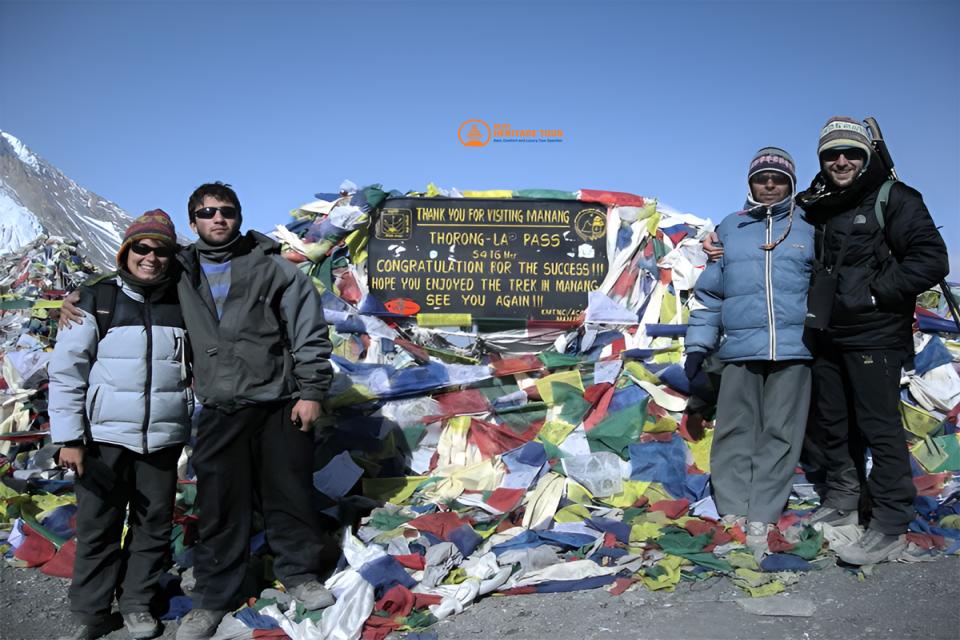Hidden deep within the rugged folds of Nepal’s Annapurna region lies a shimmering sapphire gem - Tilicho Lake. Situated at an awe-inspiring altitude of 4,919 meters (16,138 feet), it is one of the highest lakes in the world. With its surreal beauty, spiritual significance, and the raw adventure of reaching it, Tilicho Lake has become a bucket-list destination for trekkers and wanderers alike.
Whether you're planning your next Himalayan adventure or simply dreaming of high-altitude wonderlands, this comprehensive Tilicho Lake Trek Guide will take you through everything you need to know - its history, myths, weather, challenges, and how to experience the lake as part of the Annapurna Circuit with Tilicho Lake.
What is Tilicho Lake?
Tilicho Lake is a glacial lake nestled in the Manang district of Nepal, surrounded by towering Himalayan giants like Nilgiri, Annapurna, and Tilicho Peak (7,134 m). Its turquoise waters reflect the snow-clad peaks and dramatic skies, making it one of the most photogenic and surreal places on Earth.
The lake is fed by the meltwater of the northern slopes of Annapurna and Thorong La Pass. Due to its high-altitude location, the lake remains frozen during the winter months and becomes accessible to trekkers mostly from March to November.
Sacred and Symbolic: Tilicho in Hindu Mythology
Tilicho Lake is more than just a geographical marvel - it's a lake of legends. According to Hindu mythology, Tilicho Lake is considered the ancient Kak Bhusundi Lake mentioned in the Ramayana. It is believed that Sage Kak Bhusundi narrated the story of Lord Rama to Garuda (the king of birds) here.
Many Hindu pilgrims consider a visit to Tilicho Lake a spiritual journey, despite the difficult terrain. It’s not just a physical challenge - it’s a sacred pilgrimage for those who believe in the energy of the Himalayas.
Why Tilicho Lake Is a Must-Visit Destination
Tilicho Lake isn’t just a beautiful destination - it’s a transformative experience. Here’s why trekkers, nature lovers, and spiritual seekers from around the world are drawn to its shores:
Spectacular Scenery
Few places on Earth offer such a diverse and dynamic range of landscapes in such a short distance. The trek to Tilicho takes you from rhododendron-filled forests to arid alpine zones, across suspension bridges, and alongside cascading waterfalls. The highlight, of course, is the view of Tilicho Lake itself - an ice-blue mirror cradled by snow-capped peaks and surrounded by silence so pure it feels like a meditation.
Adventure Factor
Tilicho Lake is not a casual stroll - it’s an adventure. The high-altitude trail tests your endurance, demands respect for nature, and rewards you with one of the most thrilling achievements a trekker can earn. From navigating scree slopes to enduring the biting cold at base camp, every moment adds to your story.
Solitude and Serenity
Despite its growing popularity, Tilicho Lake still offers relative solitude compared to Everest Base Camp or the classic Annapurna Base Camp. There’s a calmness to the region that allows you to truly disconnect from the world and reconnect with nature and yourself.
Part of the Iconic Annapurna Circuit
Choosing to visit Tilicho Lake as part of the Annapurna Circuit with Tilicho Lake enriches your journey. You get the best of both worlds - the cultural immersion and altitude challenge of the classic circuit, plus the unmatched reward of Tilicho Lake's raw beauty.
Tilicho Lake Trek Guide: Routes and Options
Although there's no single “Tilicho Lake Trek,” most trekkers reach the lake via a detour from the Annapurna Circuit, specifically after reaching Manang.
Here’s how it typically works:
-
From Manang, trekkers veer off the main Annapurna Circuit trail toward Khangsar and Tilicho Base Camp.
-
From the base camp, a grueling 4-6 hour hike leads up to Tilicho Lake.
-
After visiting the lake, trekkers can either return to Manang or rejoin the Annapurna Circuit trail via Yak Kharka and cross Thorong La Pass.
If you’re looking for a more efficient and guided experience, Best Heritage Tour offers a condensed and well-crafted Annapurna Circuit Short Trek with Tilicho Lake that includes all the highlights without stretching your time and resources.
Note: Some advanced trekkers use the remote Mesokanto La Pass to descend to Jomsom, but this is extremely difficult and not recommended without proper gear and local support.
Sample Itinerary
While this blog isn’t focused on day-by-day plans, here’s an example of a well-paced itinerary offered by Best Heritage Tour:
-
Day 1: Drive from Kathmandu to Chame (2,710 m/8,890 ft)
-
Day 2: Trek from Chame to Pisang (3,115 m/10,200 ft)
-
Day 3: Trek from Pisang to Manang (3,540m / 11,300ft)
-
Day 4: Trek from Manang To Tilicho Base Camp (4150 m)
-
Day 5: Trek to Tilicho Lake (4,920m), back to base camp and then towards Shree Kharka
-
Day 6: Trek from Siri Kharka to Thorong Phedi (4500m)
-
Day 7: Trekk from Thorong Phedi, passing through Thorong La Pass (5,416m) to Muktinath (3,802m)
-
Day 8: Drive from Muktinath to Pokhara (850m/2788 ft)
-
Day 9: Drive from Pokhara To Kathmandu (1,350 m/4,450 ft)
Difficulty and Challenges of the Tilicho Lake Trek
Reaching Tilicho Lake is a true test of physical and mental resilience. Understanding the key challenges will help you prepare more effectively:
Altitude
At nearly 5,000 meters, the biggest challenge is the thin air. Symptoms of Acute Mountain Sickness (AMS) like headaches, dizziness, and nausea are common if you don’t acclimatize well. Spending two nights in Manang and taking short hikes in the area before ascending is a smart and necessary step.
Weather
Weather above 4,000 meters is notoriously unpredictable. A sunny morning can quickly turn into a whiteout by afternoon. Snowstorms and landslides can block the path without warning. Be prepared with appropriate gear and always consult local guides for weather updates.
Trail Conditions
The section from Tilicho Base Camp to the lake is especially demanding. It includes loose scree, landslide-prone slopes, and narrow ledges with no guardrails. It’s crucial to maintain balance and follow the safe path - especially in the early morning when temperatures are low, and conditions are stable.
Physical Fitness
You don’t need to be a mountaineer, but good cardiovascular fitness and leg strength are essential. Daily hiking durations can range from 6 to 9 hours with significant altitude gain.
Hiring a guide and porter not only enhances your safety but allows you to focus on the scenery rather than logistics.
Best Time to Visit Tilicho Lake
Timing your trek wisely can make the difference between an enjoyable experience and a harsh, life-threatening one. Here’s what you need to know about the seasons:
Spring (March-May)
Spring is a favorite for many trekkers. As the snow melts, trails reopen and rhododendrons bloom along the lower altitudes. The weather is relatively stable, with clear skies and comfortable temperatures. Wildlife sightings are more frequent during this season too.
Autumn (September-November)
Autumn is the best time to trek to Tilicho Lake. After the monsoon, the skies are clearest, the views are sharp, and the trails are dry. This is peak trekking season in Nepal, so you’ll find more fellow adventurers along the way-but Tilicho’s remote location ensures it’s never overcrowded.
Winter (December-February)
During winter, snow blocks trails and the lake is completely frozen. While the landscape transforms into a dreamy winter wonderland, temperatures drop well below freezing, and passes like Thorong La may be impassable. Only attempt this trek in winter if you’re extremely experienced and well-equipped.
Monsoon (June-August)
The monsoon months bring heavy rain, slippery trails, and frequent landslides, especially in lower altitudes. Leech-infested paths and poor visibility make it the least favorable time. However, some seasoned trekkers still venture out in late August as the season transitions.
Wildlife and Natural Beauty Along the Trail
The trek to Tilicho Lake cuts through various climate zones, which means diverse flora and fauna. You might spot:
-
Blue sheep (Bharal)
-
Himalayan Tahr
-
Snow leopards (rare but possible)
-
Yaks and mountain goats
-
Eagles and Himalayan griffons
And let’s not forget the incredible backdrop of Himalayan giants - Annapurna II, Gangapurna, Tilicho Peak, and many more. The landscape will leave you breathless (sometimes literally).
Packing Essentials for Tilicho Lake Trek
Here’s a quick checklist of things you must bring:
-
Warm sleeping bag (rated -10°C or better)
-
High-quality down jacket and thermals
-
Waterproof hiking boots
-
Sunglasses and sunscreen
-
Headlamp
-
Water purification tablets or Steripen
-
Basic first aid and altitude medicine (Diamox)
-
Trekking poles (very helpful on scree sections)
Hiring a porter or guide can make a huge difference in both safety and enjoyment.
Local Culture and Villages on the Way
On your way to Tilicho Lake, you’ll pass through traditional Tibetan-Buddhist villages like:
-
Manang - the cultural hub of the region
-
Khangsar - a peaceful village en route to base camp
-
Shree Kharka - a small stopover with breathtaking views
These places give you a glimpse into the Himalayan lifestyle, architecture, and hospitality. Don’t miss the chance to enjoy some local dal bhat or butter tea.
Tilicho Lake vs. Other High-Altitude Lakes
|
Lake |
Altitude (m) |
Region |
Special Feature |
|---|---|---|---|
|
Tilicho Lake |
4,919 |
Annapurna |
Among the world’s highest lakes |
|
Gokyo Lake |
4,700 |
Everest |
Turquoise lake views of Everest |
|
Rara Lake |
2,990 |
Western Nepal |
Largest lake in Nepal |
|
Shey Phoksundo Lake |
3,611 |
Dolpo |
Deepest lake in Nepal, turquoise |
Tilicho Lake stands out for its altitude, dramatic approach, and integration with the Annapurna Circuit.
Conclusion: Embark on the Journey of a Lifetime with Best Heritage Tour
Tilicho Lake isn’t just a trek - it’s a personal triumph. It offers a blend of myth, mountain, challenge, and calm that is hard to find anywhere else in the world. Whether you're an experienced trekker or a passionate traveler ready to test your limits, Tilicho promises memories that will last a lifetime.
If you're ready to experience the Annapurna Circuit with Tilicho Lake in a short yet immersive format, let Best Heritage Tour be your trusted guide. Their thoughtfully designed itineraries, expert local guides, and deep commitment to safety and sustainability ensure you have the most rewarding trekking experience possible.
Contact Best Heritage Tour
Website: www.bestheritagetour.com
Email: info@bestheritagetour.com / bestheritagetour@gmail.com
Phone/WhatsApp/Viber: +977-9851149197
Office Location: Thamel Marg, Kathmandu, Nepal
Book your Annapurna Circuit Short Trek with Tilicho Lake today and start your Himalayan adventure with confidence and care.
Author: Best Heritage Tour
Date: 27th July, 2025



